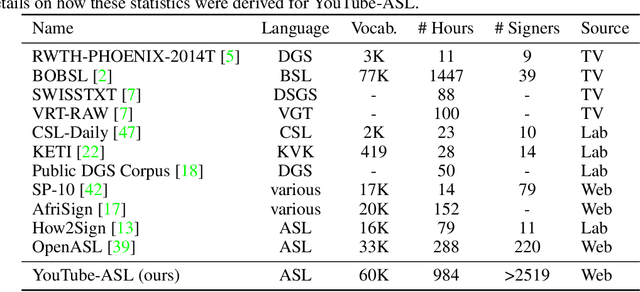Manfred Georg
FSboard: Over 3 million characters of ASL fingerspelling collected via smartphones
Jul 22, 2024Abstract:Progress in machine understanding of sign languages has been slow and hampered by limited data. In this paper, we present FSboard, an American Sign Language fingerspelling dataset situated in a mobile text entry use case, collected from 147 paid and consenting Deaf signers using Pixel 4A selfie cameras in a variety of environments. Fingerspelling recognition is an incomplete solution that is only one small part of sign language translation, but it could provide some immediate benefit to Deaf/Hard of Hearing signers as more broadly capable technology develops. At >3 million characters in length and >250 hours in duration, FSboard is the largest fingerspelling recognition dataset to date by a factor of >10x. As a simple baseline, we finetune 30 Hz MediaPipe Holistic landmark inputs into ByT5-Small and achieve 11.1% Character Error Rate (CER) on a test set with unique phrases and signers. This quality degrades gracefully when decreasing frame rate and excluding face/body landmarks: plausible optimizations to help models run on device in real time.
YouTube-ASL: A Large-Scale, Open-Domain American Sign Language-English Parallel Corpus
Jun 27, 2023



Abstract:Machine learning for sign languages is bottlenecked by data. In this paper, we present YouTube-ASL, a large-scale, open-domain corpus of American Sign Language (ASL) videos and accompanying English captions drawn from YouTube. With ~1000 hours of videos and >2500 unique signers, YouTube-ASL is ~3x as large and has ~10x as many unique signers as the largest prior ASL dataset. We train baseline models for ASL to English translation on YouTube-ASL and evaluate them on How2Sign, where we achieve a new finetuned state of the art of 12.39 BLEU and, for the first time, report zero-shot results.
 Add to Chrome
Add to Chrome Add to Firefox
Add to Firefox Add to Edge
Add to Edge